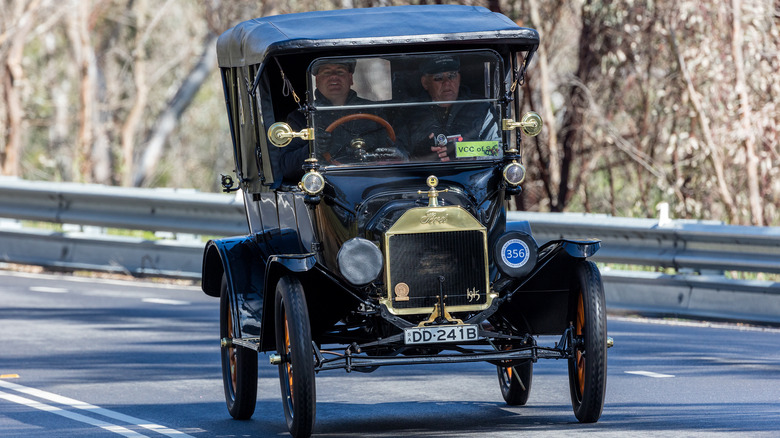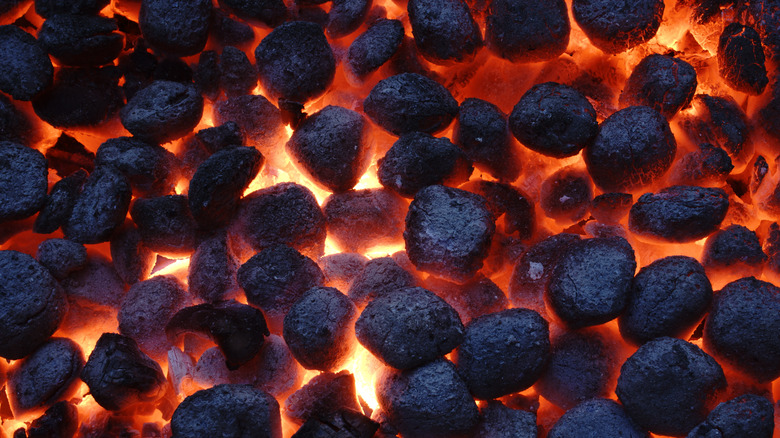The Time Ford Sold Portable Barbecue Grills
Watch the gleaming steel of cars whizzing along highways today and it's hard to believe that in the earliest days of automobile manufacturing, wood was a major component of the vehicles that got people and goods from place to place. But according to Owlcation, the first mass-produced car in the United States, the Ford Model T — built from 1908 to 1927 — required about 100 board feet of wood for the vehicle's steering wheel, frame, and wheel spokes. A board-foot is a measure denoting a piece of wood that's 1 foot long, 1 foot wide, and 1 inch thick.
By 1919, the Ford Motor Company was producing about a million cars each year, and founder Henry Ford needed a sustained source of lumber. Useless Knowledge explains that Ford worked with his cousin–in-law, Edward Kingsford — a real estate professional and Ford dealership operator — to acquire more than 300,000 acres of Michigan timberland. But that created another problem: Fashioning trees and lumber into steering wheels and other components created significant waste. That was disheartening for Ford, an early proponent of the "reduce, reuse, recycle" approach to environmental stewardship.
As it turned out, Ford's love of camping (per Useless Knowledge) held the key to addressing the problem of wood waste in car production.
Henry Ford finds a side hustle
The wood that found its way into Ford automobiles from the Michigan timberlands was cut at an on-site sawmill, then shipped to Detroit for assembly into vehicles. At about the same time Henry Ford was puzzling over the wood waste created, University of Oregon chemist Orin Stafford was independently looking into ways to use sawmill waste. Ford decided to utilize Stafford's process for turning charcoal powder into briquettes to both solve his problem with wood waste and create a new line of business (via University of Houston).
Ford set up a factory, designed by Thomas Edison, next to his sawmill and began producing his own briquettes. The factory bound sawdust and wood shavings together and then burned them to get rid of the binding agents. The resulting charcoal briquettes provided a reliable source of sustained heat, and in the outdoors, eliminated the need to scrounge for dry kindling to start a fire. Soon enough, Ford automobile dealerships also were in the business of selling Ford charcoal "briquets," in addition to "picnic kits" that included a portable steel barbecue grill small enough to load into a car (via Wall Street Journal). By the 1950s, however, Ford had discontinued the use of wood in its cars, and in 1951, the charcoal business was sold to a group of investors who named the briquets "Kingsford" (per Owcation). So many grillmasters have Ford to thank for the fuel source — and maybe the mistakes that people make using charcoal.

